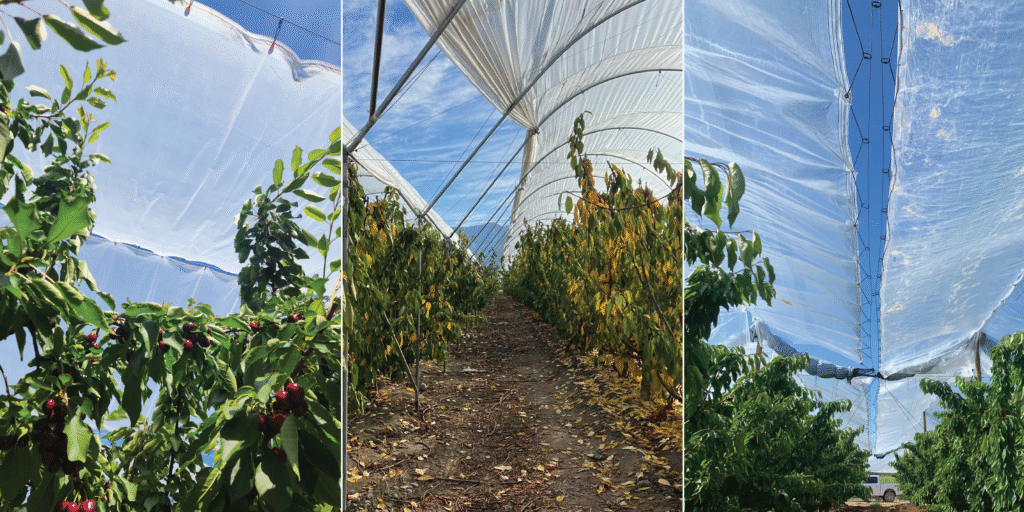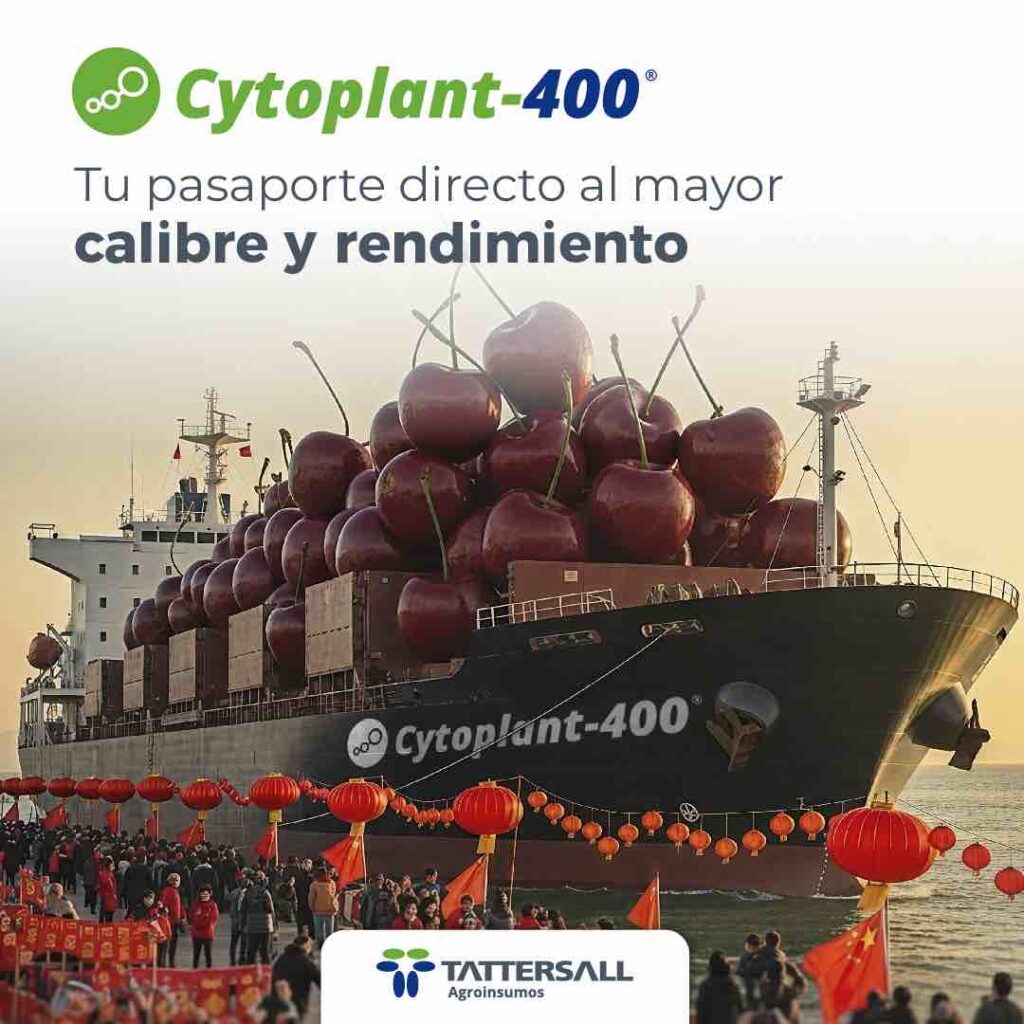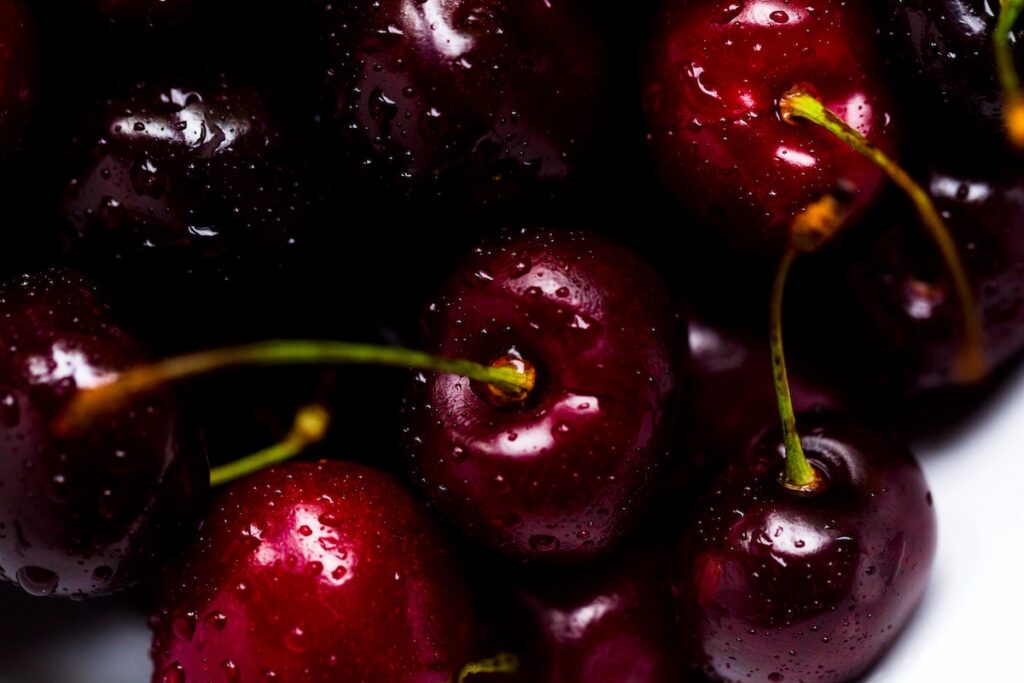
Nutritional balance or mineral nutrition is one of the aspects that arouse great interest in understanding the responses of each nutrient in the physiological processes of plants and, especially, in cherry cultivation in relation to its condition for each variety/plant, among others. A base fertilization program is, without a doubt, essential to promote practices that aim to ensure adequate physiological activity in the plant and that are in tune with obtaining fruit of good condition and export quality. These programs are built based on the intensity of nutrient extraction in relation to the information obtained from the productions and nutritional analyses carried out on fruit and leaves during the season.
The generation of a soil fertilization and/or irrigation program must be “put together” by understanding the degree of absorption of nutrients in the solution, given mainly by the relationship that exists with the growth rate of the plants and with the concentration of nutrients that exists in the new organs, as long as the minerals are available. Thus, there are a number of factors that determine the availability and mobility of nutrients, which varies according to the species and the combinations of varieties vs. rootstock, as well as according to the characteristics and conditions of the soil, the content of organic matter, among other factors. Likewise, foliar fertilization is an important technique for the productive management of cherry trees, where it is of great support to the complementarity of the soil and/or fertigation programs that are carried out during the season, there being various factors that influence to achieve maximum efficiency, and which are also under constant study to determine which are the moments and physical-chemical, biological and environmental principles that affect the absorption of nutrients applied by foliar spraying.
Cherry cultivation is characterized by having a flowering to harvest stage that is very short, and can be between 50 to 80 days depending on the variety, that is why a pre-harvest foliar nutrition program is essential in the first phenological stages of the crop, especially biostimulant action products and elements such as Ca that can be attractive in springs with adverse conditions.
Crop nutrition mainly involves the rational allocation of nitrogen, calcium and potassium at different phenological moments. In the case of nitrogen, this is done in the post-harvest stage, prior to foliar nutritional analysis and with the background of soil monitoring. The use of amino acid-based products in pre-harvest is a practice that may be attractive to use, especially in high load conditions in orchards that present poor vegetative expression, which would contribute to improving the physiological processes of the treated plants. These additions would not supply the demand for N by the crop, but they do generate an early biological effect in the same line as basic nitrogen nutrition.
Regarding the fertilization of the crop with Ca and K, it is found as a foliar program in the first phenological stages of the cherry tree with good results when applied at higher label doses, and K applied at stages close to the straw color of the fruit. In the case of applications via pre-harvest fertigation, the Ca element through its different formulations has reported interesting experiences applying them between 15 to 20 days after full blossom (DDPF), experiments that have been carried out in recent years.

Within this dynamic of foliar and soil nutrition programs, we always want to understand the responses that are generated in the final product, which is the fruit, because what is not measured cannot be understood, and in effect it allows for correcting or including elements in a base fertilization program in the crop, this being one of the essential components for obtaining quality fruit.
Since the “artist” of all this is the fruit and it is ultimately the one that takes all the applause (behind the scenes in this particular case: the nutritional management that was done during the season), the focus is to be able to elucidate the importance that nutrition has in the quality and condition of the fruit, and where the work carried out during these last years could be a starting point to understand the different relationships that exist between the most important minerals, with the focus mainly on the condition of % of dry matter of fruits (DM), which although it is not the most important attribute of the cherry if we compare it with the size, this is a fundamental index that is related to the firmness of the fruit and to some degree its sweetness.
The relationships that were established are aimed at understanding the responses between minerals, which could give us background information on the correlation that exists between MS and the minerals that may be associated with them.
First, it should be noted that the analyses were performed on fruit with harvest indices suitable for each variety and that these were sampled and sent to the laboratory in accordance with its evaluation protocol to then obtain the results for each nutrient, generating important data based on 5 sampling seasons. Secondly, the study was conducted through a dispersion diagram matrix (SPlotM) and the corresponding correlations (Pearson) were made for each case, in this way the degree of correlation that exists in each of them can be displayed.
Figure 1. Dispersion diagram of different nutrients and DM in fruits of cv. Regina on Gisela 6 rootstock.

Pearson's coefficient of relationship is a statistical test that allows observing the level of relationship that exists between two continuous variables, which are represented in ranges from -1 to +1. When positive values are obtained between two variables, it indicates that they have a "positive" association, that is, that when one variable increases, the other variable would also increase or vice versa; while negative values would indicate that they go in the opposite direction, where if one variable increases, the other variable decreases or vice versa, this would correspond to a "negative" association. This is how it can be identified that the degree or magnitude of correlation as a usual criterion is considered as follows:
r ≤ │0.20│is a low linear correlation
│0.20 ≤ r ≤ 0.60│is an average linear correlation
│0.60 ≤ r ≤ 1.0│is a high linear correlation
From this point of view, it can be highlighted in cv. Regina on Gisela 6 rootstock (Fig. 1) that there is a positive average linear correlation in P/K, Ca/Mg, while there is a negative correlation between N/Ca and Mg/MS. These values are statistically significant, that is, these values would explain that the correlation is very unlikely to be explained by the sampling error, where we can extrapolate to the fact of their relationship and not to its magnitude. When exploring information on Regina in Gisela 12, it can be seen that there is also a significant positive correlation between P/K, but what is most striking is the relationship that exists in P/MS, where a significant positive correlation can also be seen. Although the relationships cannot be read as cause or effect, that is, it cannot be assumed that a change in one variable is the cause of a change in the other, since the correlation coefficient is not proof of causality, however, this can be raised as a hypothesis.
When analyzing the two main varieties exported from Chile, Lapins and Santina (Fig. 2 and 3), some similarities can be established regarding the correlation they have with the different nutrients, this is how N has a significant negative correlation with respect to DM, an issue that has been reported in different studies in which N is antagonistic with the DM content in the fruit, and that this condition would be detrimental to the post-harvest condition of the fruit. One of the associations that calls attention and is the subject of further analysis is the Ca content in terms of the negative relationship that this nutrient has with respect to DM in cv. Lapins, although a low negative correlation of Ca/DM is observed, it is significant, so it is very unlikely to be a sampling error.
Given this situation and understanding that Lapins is one of the most exported varieties according to what was reported by IQonsulting (around 148,000 tons) with a share that exceeds 1/3 of the fruit supply of the different varieties of the 2022/23 season, it is undoubtedly where efforts should be directed to understand the responses to the different fertilization strategies that are being carried out in this variety/pi combination in each particular case.
However, in Lapins/colt, as in Regina's case with the Gisela series, an interesting response can be observed in the P content and the affinity with the DM, where in both cases a tendency to improve the DM content can be seen when the P variable increases; this could be very interesting if it could be proposed as a thesis in which this mineral can be incorporated into P-based fertilization programs with the objective of improving the fruit's condition in terms of DM, thereby obtaining an adequate post-harvest life.
Figure 1. Dispersion diagram of different nutrients and DM in fruits of cv. Lapins and Santina on Colt rootstock.


The responses to the different nutritional applications are undoubtedly affected by the vegetative/productive balance of the crop, and must be adapted to the particular condition of each orchard; focusing nutrition on a balanced program is of utmost importance, as is incorporating the nutrients that are necessary at the right time according to the demand of the crop, considering the physiology of the different organs of the tree.
Literature:
- Tapia, C., Lepe, V., & Pezoa G. (2021). In search of nutritional balance vs. Fruit quality in cherry trees. Mundo Agr Magazineeither.








